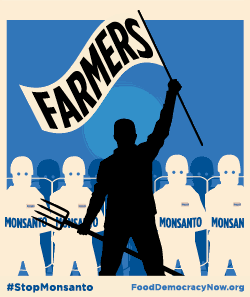the findings are clear
Now some peer review:
Tweet
Rind, Tromovitch, and Bauserman:
Politically Incorrect - Scientifically Correct
-- Thomas D. Oellerich --
Introduction
The response to the Rind, Tromovitch, and Bauserman (1998) study was surprising. But the response of the American Psychological Association (APA) was, to say the least, startling and distressing. Rather than responding to the outcry provoked by this study with a discussion of the right of and importance for scientists to publish unpopular findings, the APA chose to distance itself from the study. This distancing included the assertion that child sexual abuse (CSA) causes serious harm and that "such activity should never be considered harmless ...'(American Psychological Association,' 1999; emphasis in the original). Additionally, the statement ignored the recommendation of Rind et al. to differentiate abusive sexual behavior from the non-abusive.
This paper addresses these two issues. First, it asserts that the idea that adult/nonadult sexual behavior 'should never be considered harmless' is not based on the evidence. Second, it supports the importance of differentiating abusive and nonabusive adult/nonadult sexual behavior both in the research and practice arenas. Additionally, this paper explains why a professional organization, such as the APA, would distance itself from the Rind, Tromovitch, and Bauserman's report. Lastly, it makes recommendations with respect to responding to the problem of adult/nonadult sexual behavior.
The issues
First, the blanket statement that the sexual abuse of children is harmful to its victims is false. And its falsity has been attested to since the 'discovery of child sexual abuse.' For example, in 1975, David Walters identified as one of the major myths surrounding CSA was that it caused lasting psychological harm. He asserted that what harm may be experienced by the child was due to factors extrinsic to the sexual abuse itself:
Most of the psychological damage, if any, stems not from the abuse but from the interpretation of the abuse and the handling of the situation by parents, medical personnel, law enforcement and school officials, and social workers (p.'113).
Four years later, Finkelhor (1979) proposed an ethical justification for prohibiting adult/child (defined as a prepubertal youngster) sexual behavior. The reason for using an ethical justification was that the justification based on psychological harm lacked cogency. According to Finkelhor, it was empirically weak since 'it is possible that a majority of these children are not harmed'(p.693).
More recently, the Past President of the APA, Martin Seligman (1994), argued that the case for CSA being a 'special destroyer of adult mental health' (p.'232) was far from proven. The existing research indicating harm, according to him,'abandoned methodological niceties'(p.233). These studies were characterized by sampling bias, lack of adequate control groups, and a failure to consider alternative explanations for the findings. He wrote:'Once the ideology is stripped away, we still remain ignorant about whether sexual abuse in childhood wreaks damage in adult life and, if so, how much'(p.234).
Of significance is the fact that the weight of the evidence, when objectively considered, has supported the notion that CSA is neither necessarily nor typically harmful. For example, Constantine (1981) reviewed 30 studies. He found that
20 report at least some subjects without ill effects;'13 of those conclude that, for the majority of subjects, there is essentially no harm; and six even identify some subjects for whom, by self-evaluation or other criteria, the childhood sexual encounter was a positive or possibly beneficial experience (p.'224).
In his review of 25 studies, Conte (1985), taking issue with Constantine's using the research 'to make a case for 'legitimate instances of child-adult sex', concluded that 'a review of the literature describing the effects of sexual abuse on children leads irrefutably to the ambiguous conclusion that sexual abuse appears to affect some victims and not others'(p.'117).
Similarly, Browne and Finkelhor (1986) reviewed 28 studies. They found that among adults who had experienced CSA less than 20 percent evidenced serious psychopathology. They noted with concern the efforts of child advocates to exaggerate the harmful effects for political purposes because of its potential to harm the victims and their families:
Advocates [should] not exaggerate or overstate the intensity or inevitability of [negative] consequences [because] victims and their families [...] may be further victimized by exaggerated claims about the effects of sexual abuse (p.'178).
Kendall-Tackett, Williams, and Finkelhor (1993) reviewed 45 studies. They found that up to 49 percent of the sexually abused children suffered no psychological harm. They concluded that a lack of symptoms could not be used to rule out sexual abuse since 'there are too many sexually abused children who are apparently asymptomatic' (p.'175). Further, among the children who were symptomatic, symptom abatement occurred for most within two years with or without treatment. These authors also found that when sexually abused children in treatment were compared with nonabused children in treatment, the sexually abused were less symptomatic than their nonabused clinical counterparts (p.'165).
In 1997, Rind and Tromovitch conducted a meta-analytic review of seven studies on the effects of child sexual abuse. Unlike prior reviews which were based primarily on clinical samples, this review involved studies that used national probability samples: four were from the United States, and one each, from Great Britain, Canada, and Spain. The findings indicated that child sexual abuse 'is not associated with pervasive harm and that harm, when it occurs, is not typically intense' (p.'237). The findings of Rind, Tromovitch, and Bauserman, which caused the recent maelstrom, simply confirmed this earlier study.
Moreover, it has not been demonstrated that CSA has any influence upon the adult personality. For example, Beitchman, Zucker, Hood, DaCosta, Akman, and Cassavia (1992) reviewed 32 studies. They concluded that the evidence suggested that CSA has serious long-term effects, but that it was not clear to what extent these effects were due to CSA per se (p.'115). Levitt and Pinnell (1995) concluded, based on their review of the literature, that 'the traditionally accepted link between childhood sexual abuse as an isolated cause and psychopathology in adulthood lacks empirical verification'(p.151). The Rind, Tromovitch, and Bauserman study(1998) indicated that CSA is non-causative. They reported that CSA-adjustment relations became nonsignificant when family environment was controlled for. Indeed, the evidence tends to confirm Seligman's earlier conclusion that
the case for childhood trauma - in anything but its most brutal form - influencing adult personality is in the minds of the inner-child advocates. It is not to be found in the data (p.'235).
Thus, contrary to the APA's assertion that CSA should never be considered harmless, quite the opposite is the case. That is, the empirical evidence gives no reason to consider CSA as necessarily or even usually harmful.
Second, based on their findings, Rind, Tromovitch, and Bauserman made the important recommendation that the scientific community use more neutral terms to study the phenomena of adult-child and adult-adolescent sexual behavior. In their view, abusive sexual behavior would be reserved to situations involving an unwanted sexual encounter with negative reactions. Those situations involving a willing encounter with positive reactions would be labeled simply adult-child sex or adult-adolescent sex (p.'46). One might wish to further refine this recommendation (e.g., abuse should be defined when the child/adolescent is unwilling regardless of whether their action was negative or not).
Similarly, Browne and Finkelhor (1986) reviewed 28 studies. They found that among adults who had experienced CSA less than 20 percent evidenced serious psychopathology. They noted with concern the efforts of child advocates to exaggerate the harmful effects for political purposes because of its potential to harm the victims and their families:
advocates [should] not exaggerate or overstate the intensity or inevitability of [negative] consequences [because] victims and their families [...] may be further victimized by exaggerated claims about the effects of sexual abuse (p. 178).
[...]
But there is an additional reason - money. As noted by Dineen (1999), the psychology industry (which she defined broadly to include psychologists, psychiatrists, psychoanalysts, clinical social workers and psychotherapists) needs victims to justify the expansion of its domain and, thus, it "manufactures victims." A similar point was made earlier by Tavris (1993) with respect to the incest-survivor recovery movement. CSA is a problem widely exploited by professionals according to Costin, Karger, and Stoesz (1996):
the rediscovery of child abuse by the middle class has also led to the growth of a child abuse industry composed of opportunistic psychotherapists and aggressive attorneys who have prospered from child sexual abuse, exploiting adults who have evidence of having been abused and encouraging memory recall from those who haven't. ... Clearly, the psychological paradigm of child abuse has been a godsend ... for mental health professionals looking for new diseases. Unfortunately, one of the casualties of this new industry has been adult victims, who risk being victimized yet again, this time by a child abuse industry seeking out new forms of economic growth. ...
... Ironically, a public that is sympathetic to the plight of abused and neglected children fails to understand that it foots much of the bill for an out-of-control and demand-driven legal and psychotherapy industry.... (p. 7)
Labels: American Psychological Association
Submit To PropellerTweet














